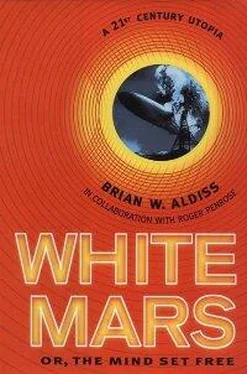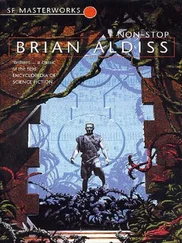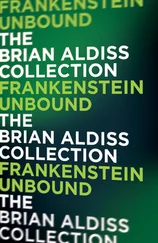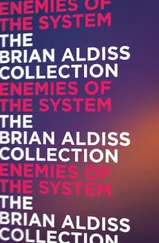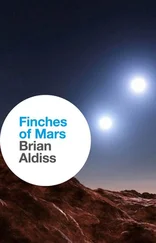Brian Aldiss - White Mars
Здесь есть возможность читать онлайн «Brian Aldiss - White Mars» весь текст электронной книги совершенно бесплатно (целиком полную версию без сокращений). В некоторых случаях можно слушать аудио, скачать через торрент в формате fb2 и присутствует краткое содержание. Год выпуска: 1999, ISBN: 1999, Издательство: Little, Brown UK, Жанр: Фантастика и фэнтези, на английском языке. Описание произведения, (предисловие) а так же отзывы посетителей доступны на портале библиотеки ЛибКат.
- Название:White Mars
- Автор:
- Издательство:Little, Brown UK
- Жанр:
- Год:1999
- ISBN:0-316-85243-0
- Рейтинг книги:5 / 5. Голосов: 1
-
Избранное:Добавить в избранное
- Отзывы:
-
Ваша оценка:
- 100
- 1
- 2
- 3
- 4
- 5
White Mars: краткое содержание, описание и аннотация
Предлагаем к чтению аннотацию, описание, краткое содержание или предисловие (зависит от того, что написал сам автор книги «White Mars»). Если вы не нашли необходимую информацию о книге — напишите в комментариях, мы постараемся отыскать её.
White Mars — читать онлайн бесплатно полную книгу (весь текст) целиком
Ниже представлен текст книги, разбитый по страницам. Система сохранения места последней прочитанной страницы, позволяет с удобством читать онлайн бесплатно книгу «White Mars», без необходимости каждый раз заново искать на чём Вы остановились. Поставьте закладку, и сможете в любой момент перейти на страницу, на которой закончили чтение.
Интервал:
Закладка:
As Thorgeson continued, referring to “LEP’, the “LHC’, and various particle physics notions such as “lepton” and “hadron”, I found that I was beginning to lose the thread of much of what he was saying. Fortunately Kathi’s earlier explanations were still useful to me, so I knew what some of the terms meant.
Then I heard Euclid saying, “Could they use the LHC to trace the Higgs? Could they use the LHC to trace the Higgs? Could they use the LHC to trace the Higgs?”
Thorgeson thumped Euclid’s back. “You mean to say, ‘Could they use the LHC to trace the Higgs?’ Well, they finally got the equipment working in about 2005…”
I realised that Euclid was talking with Thorgeson’s voice although, without inflection, it sounded almost like a foreign language. But Thorgeson had programmed it. It amused me to think that, although Thorgeson was a stalwart “hard science” man where questions of the human mind were concerned—believing there was nothing more to human mentality than the functions of a very effective quantputer—he could not resist making fun of his creature now and again.
Kathi had once tried to explain this “hard science” position to me. Apparently it is commonly held by today’s scientists.
She told me that they are simply missing the point. She explained their view to be that human mentality results solely from those physical functions that underlie an ordinary quantputer. I’m not really familiar with these underlying principles, but Kathi did have a go at trying to explain them. Apparently quantputers, and their smaller brothers the quantcomps, act by a combination of brute force computation in the old twentieth-century sense, and a collection of quantum effects referred to as “coherence”, “entanglement” and “state reduction”. Although I was never clear about these terms, Kathi explained that mentatropy and CPS detectors (’savvyometers’!) are based on such effects.
Thorgeson was saying, “The riddle of mass needed a solution. A Korean scientist by the name of Tar Il-Chosun came up with a brilliant conception that, in effect, increased the energy range of the LHC by a factor of about one hundred. As a result, by 2009 the LHC had surveyed the complete range of energies that could possibly be relevant to the Higgs mass. Frustratingly, there was nothing that could be clearly identified with the Higgs. Instead they found something else, as strange as it was interesting.”
Euclid: “What was that?”
“Using the newly perfected Ng-Robinson Plot, they found a smudge, roughly where the Higgs particle should have appeared.”
Euclid: “So they found the Higgs?”
“They just found a smudge. No particle.”
Euclid: “So that’s where the name Smudge came from…”
“Absolutely.”
Euclid: “But if they found this smudge in 2009, why all this business of setting up an umpteen-billion-dollar project to look for it here on Mars?” (Spoken with that same bland pleasant expression on its face.)
“What excitement this smudge caused! Excitement and dissension in the ranks! This, by the way, was when the consortium we know as EUPACUS was being assembled. Since CERN was already involved, the Europeans agreed to invest massively in it. You can bet they’re regretting that now!
“The first problem the smudge threw up was that, by its very nature, its appearance on the Plot merely indicated a probability of something being there. The Higgs smudge had a very faint intensity, meaning the probability of the existence of a particle corresponding to any particular position on the Plot was very slight. Yet, on the other hand, the smudge covered so large a region of the Plot that the overall probability that something was there approached certainty.
“More experiments needed. The smudge remained.
“With finances forthcoming, the Americans with Asian and European backing finally built the SHC, the Superconducting Hypercollider, of beloved memory. My father worked on it as a young man, in an engineering capacity. They constructed this monumental bit of Big Science not in Texas, but straddling the states of Utah and Nevada.”
He projected a vidslide of an artist’s cutaway of the great tube, burrowing under desert.
“And when they got the SHC working—darned if it didn’t come out with the same results as previously! Seems a lot of dough had gone down the drain for nothing, one more time! The sought-after smudge remained just a smudge … At that, it was a smudge on an entirely theoretical construct, the Ng-Robinson Plot. No actual Higgs particle could be pin-pointed. Yet, you see, the overall probability that something was there amounted to certainty.”
Euclid: “No actual particle could continue to produce just an unresolvable smudge on the Plot?”
“Quite right, Euclid. They had a first-class mystery on their hands. And there, just when it gets exciting, we’re going to take a break for ten minutes.”
Applause broke out as I led Jon into an anteroom. We left Euclid on the platform, standing facing the audience with his customary pleasant blank expression.
Thorgeson shut the door behind us and came towards me saying, “I’m doing all this for you, my little Asian honeypot!”
He wrapped an arm round my waist, pulled me close, and kissed my lips.
I gave a small shriek of surprise. Asian honeypot indeed! He did not release me, but showered compliments on me, saying he had adored me ever since he had set eyes on me in the science unit. I did not mind the compliments. When he started to kiss me again, and I felt the warmth of his body against me, I found myself returning them.
I rejoiced when his tongue slipped into my mouth. I was becoming quite enthusiastic when the door opened and Tom and some others came in to congratulate Thorgeson on his exposition. This was one time when I felt really mad at Tom.
Back we marched into the hall. Thorgeson seemed quite calm. I was trembling. He had been about to grab my breasts under my clothes, and I could not decide how I would feel about that. I was furious with the situation. It was all I could do to sit there and listen to him. How should I deal with him when the lecture was over—with that Euclid looking on, too?
However, I now saw a new kind of passion in Jon—not a physical passion but an intellectual one, as he took over from Euclid and spoke of the next epoch of scientific discovery.
“Euclid and I were talking about the smudge mystery,” he said when the audience had settled down. “I will skip some years of confusion and frustration and speak about the year 2024. That was the year when there were two breakthroughs, one experimental, one theoretical.
“The experimental breakthrough came when SHC got up to full power, far beyond anything originally planned for the unbuilt SSC, using a further innovation contributed by the Indonesian physicist, Jim Kopamtim. Lo and behold at far greater energies than were achieved previously, another smudge was found!
“So the Higgs smudge had to be rechristened the alpha-smudge, while the new one went by the name of beta-smudge.
The theoretical breakthrough—well, I should say it came a while before the SHC observations. A brilliant young Chinese mathematician, Chin Lim Chung, achieved a completely reformulated theoretical basis for particle physics as it stood at the time. Miss Chin introduced some highly sophisticated new mathematical ideas. She showed how a permanent smudge could indeed come about on the Ng-Robinson Plot, but the culprit could not possibly be a particle in any ordinary sense.
“It was a new kind of entity entirely. So from henceforth it was simply referred to as a smudge.
“Soon after the SHC announcement, Chin Lim Chung, working in conjunction with our own Dreiser Hawkwood, figured out that the alpha and beta smudges had to belong to a whole sequence of smudges, at higher and higher energies. It was clear that until this sequence was known as a whole, there was going to be no solution to the mystery of mass.
Читать дальшеИнтервал:
Закладка:
Похожие книги на «White Mars»
Представляем Вашему вниманию похожие книги на «White Mars» списком для выбора. Мы отобрали схожую по названию и смыслу литературу в надежде предоставить читателям больше вариантов отыскать новые, интересные, ещё непрочитанные произведения.
Обсуждение, отзывы о книге «White Mars» и просто собственные мнения читателей. Оставьте ваши комментарии, напишите, что Вы думаете о произведении, его смысле или главных героях. Укажите что конкретно понравилось, а что нет, и почему Вы так считаете.
